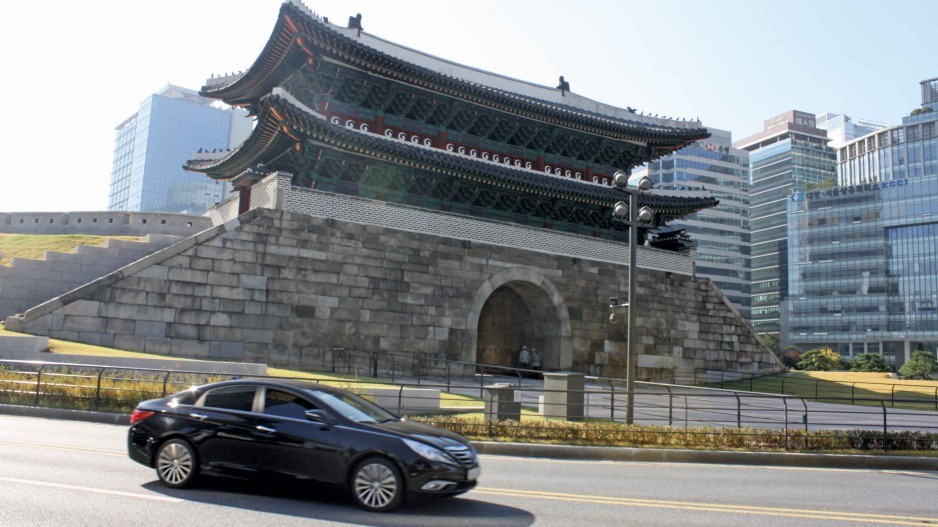As the bus full of foreign journalists and investors passes through the Mieum industrial area of the South Korean port city of Busan, the tour guide casually points to a large mound of raw earth topped by excavators.
A small “mountain” is being “removed,” she explains, to make way for a new US$9 billion data centre that Microsoft Corp. (Nasdaq:MSFT) is building in the Busan-Jinhae Free Economic Zone (FEZ), one of eight being developed in an attempt to lure foreign companies.
It is perhaps an overstatement to call the hill a mountain, but it underscores a point: Korea means business, and it will literally move mountains to facilitate foreign investment.
Microsoft is just the latest large foreign corporation lured to South Korea by its generous rent and tax incentives, business-friendly policies, highly educated workforce, leading industries, heavy investment in research and development and its position as an Asian trading hub.
Depending on the sector they are in, foreign companies setting up in one of South Korea’s eight FEZs can qualify for incentives such as 100% tax exemptions for five years, and 50% for two years after that. In the Incheon FEZ, incentives can include free rent for up to 17 years. Companies investing in research and development (R&D) can qualify for cash incentives.
Solvay SA, a Belgian chemical company, also recently invested in Korea, but not because of the incentives offered in the FEZs.
It was Korea’s expertise in energy storage and display technology – both key components for the mobile device sector – and its position as an Asian trade hub that led Solvay to open a new R&D centre in partnership with the EWHA Womans University in Seoul in June.
“It’s certainly not a country where you can come hoping for low wages,” Christian Jourquin, former CEO for Solvay, told foreign journalists and investors during a site visit to the company’s new R&D centre. “If you come in this country, it’s to have access to the best companies and the best technologies.”
Solvay may be best known for its involvement in building the first solar-powered airplane. (The Solar Impulse has already flown across North America, entirely on solar power, and the first round-the-world flight is planned for 2015.) Pascal Metivier, Solvay’s director of research and innovation for Asia, said intellectual property protection in Korea is good, and the universities there are more open to collaboration with industry than are Japanese universities.
Korea has a highly educated workforce and invests 4.36% of its gross domestic product in research and development. More importantly, for Solvay, South Korea is a market leader in the mobile space and electronics – the areas in which the company is developing next-generation chemicals and materials.
“Who is No. 1 and No. 2 in the world in this space?” Metivier asked – referring to Samsung and LG Electronics. “Two Korean companies. Who do we believe are going to be the leaders in the next 10 years in those markets? Two Korean companies.”
That may explain why Chinese telecom giant Huawei recently announced plans to establish a smartphone R&D centre in Korea, and why Canada’s BlackBerry Ltd. (BB:TSX) is partnering with Samsung to provide its secure messaging platform for Samsung’s Galaxy smartphones and tablets.
As investors at Foreign Investment Week 2014, which took place October 29 to 31, heard, there are opportunities for a wide range of foreign companies, large or small, to enter collaboration deals with Korean companies and researchers or to set up regional offices or manufacturing plants.
There are also opportunities for foreign companies to build schools, hospitals, clinics, casinos, hotels and leisure facilities in the residential areas of the FEZs, which will cater to foreign workers. (While it is expected that these companies will take advantage of Korea’s highly skilled workforce, it’s also expected that many will bring some of their own workers to Korea.)
In addition to developing free economic zones, South Korea has also aggressively pursued free trade, and now has agreements in place with 47 countries. It is also working with China to develop a renminbi trading hub, which one Korean official described as “a high-speed” currency connector between the two countries.
To explain why Korea has been so aggressive in pursuing foreign investment, Yeo Han-koo, the Ministry of Trade, Industry and Energy’s deputy chief for the Trans-Pacific Partnership, pointed to Korea’s “foreign dependency ratio.”
With a population of only 50 million, Korea does not have China’s or Japan’s large domestic markets. South Korea’s foreign dependency ratio is 97%, Yeo said, compared with China’s ratio of 51% and Japan’s 27%.
“Korea has a small population, but [it’s] also a rapidly aging population,” he explained. “So our domestic market is saturated.”




